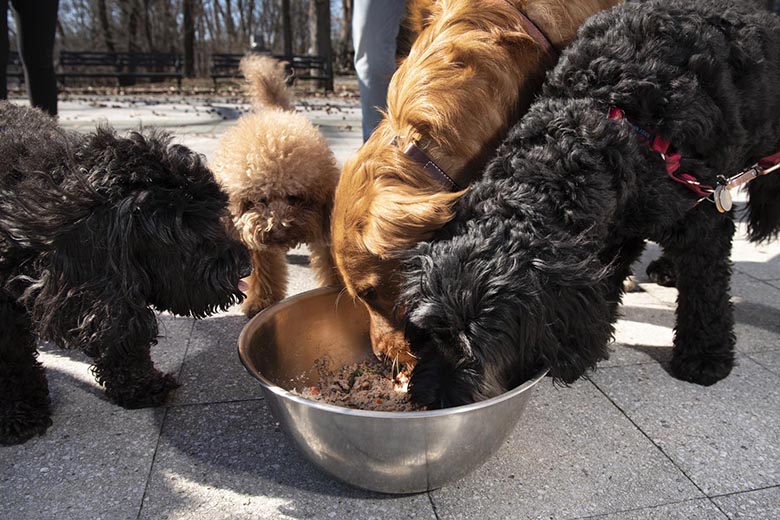
Parsnips, carrots, chickpeas, spinach and turkey: Sounds like dinner, doesn’t it? Well that’s because it is, and it’s for your dog.
With farm-to-table going mainstream, brands including JustFoodForDogs and Farmer’s Dog are applying a similar philosophy to pet food, shaking up the idea that it’s any different from “human food” by creating animal meals of human-grade ingredients. This means that virtually all of the items in their products are also fit for human consumption, too, and are things you could find at your local supermarket.
Choosing dog food is no simple task as anyone with a wet-nosed bestie knows. Pet food aisles are lined with a dizzying selection. There’s also debate over whether grain-free is good, bad or even dangerous. Recalls happen sometimes, too, which could be before you even start considering what the ingredients actually are.
“Think of the … little brown pellets of meat with a shelf life of one to three years. You can’t really put meat in a bag,” says Shawn Buckley, the founder of JustFoodForDogs.
Kibble as we know it today is a fairly new invention. For years, dogs were mostly fed table scraps. In the late 1860s, the first commercial pet food—a mix of wheat, vegetables, beetroot and meat—appeared on the market. It quickly gained popularity, and canned dog food (that actually used horse meat) became widespread. It wasn’t until the rations of World War II that the kibble we know today was developed, and it hasn’t changed much since then.

Have some in your home? Take a look at the ingredients and even the most vigilant of label readers might be surprised.
“Vegetable fiber, for instance, is often just peanut shells; that’s not food,” says Buckley. Committed to whole ingredients, his company recently opened a dog food kitchen at the Petco in Union Square, where in addition to selling their product, they teach classes for making your own pet food at home.

Farmer’s Dog—which has three kitchens in the United States—sources all their food from farms from within 200 miles of each kitchen. “Food shouldn’t be made, it should be grown,” says Brett Podolsky, Farmer’s Dog co-founder.
Podolsky started Farmer’s Dog after his own dog, Jada, had health issues, mostly related to her sensitive stomach, and he couldn’t find a good food for her. “We’re trying to make the healthiest dog food possible, accessible.” The food is sold in pre-portioned sizes, and if you select a subscription to either, service arrives frozen.

This relative simplicity does come at a cost, though. As food is customized for the dog, pricing varies, but for an adult female golden retriever, you’d be paying about $9 per day or $270 per month compared to a bag of a mid-range kibble of about $65.
Yet, I got the sense from Buckley and Podolsky that the motivation behind both their dog food companies was less about money and more about helping pets be healthier. Each said they didn’t see the other as competition but are rather out to challenge the big kibble companies.
“The key thing for us is there is no such thing as a good kibble, it’s all highly processed food,” Podolsky says.
And, yes, the ambitious among us could make dog food at home, but when faced with buying the ingredients, including vitamins and nutrient supplements and then cooking everything up, it’s hard to resist the idea of having premade food delivered to your door.
Even the pickiest of dogs in my neighborhood excitedly gulped down the turkey meal from Farmer’s Dog on a recent Saturday morning. And while whether it’s actually healthier, or even results in a longer life, is still up for debate, it certainly looked more appetizing than those hard little brown balls. Just try not to confuse it with your own food.









